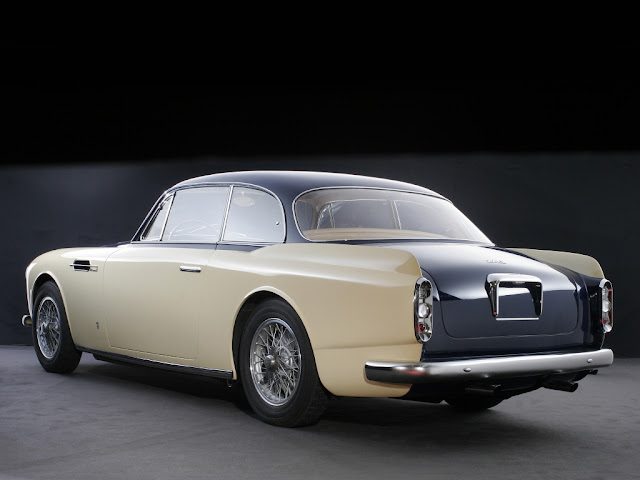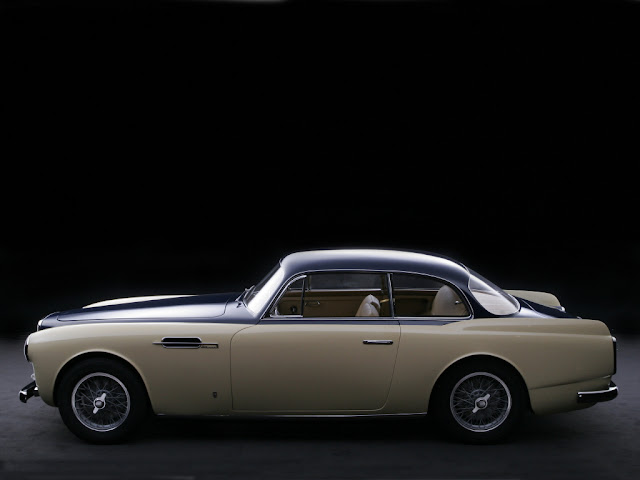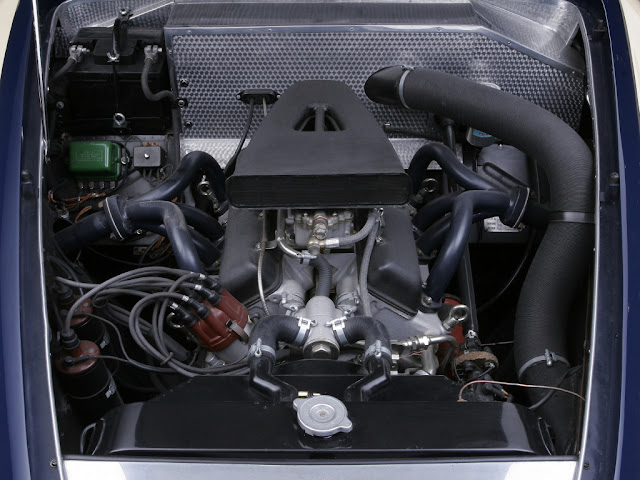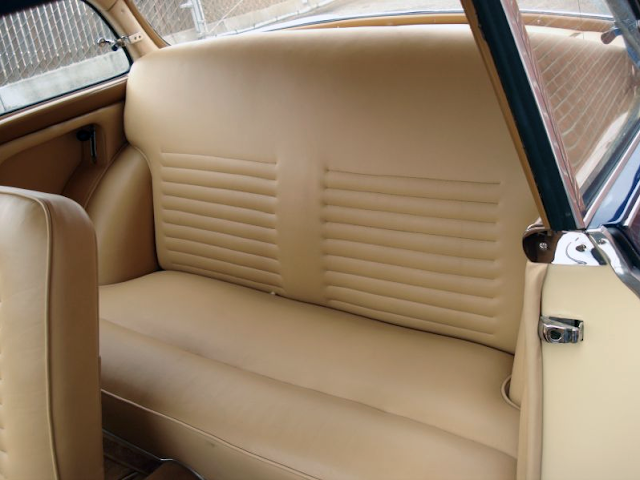SIATA (Societa Italiana Auto Trasformazioni Accessori) was founded in Turin, Italy in 1926 by Giorgio Ambrosini, and began by modifying and tuning FIATs. What is arguably SIATA’s most famous model, the Tipo 208, which was based on the V8-engined Fiat ‘8V’ model and equipped with a variety of stylish Italian coachwork from the likes of Stabilimenti Farina, Vignale and Bertone.
Rather than a series production model, the Fiat 8V had been conceived as the company’s exclusive image-making flagship as well as a contender in international 2-litre GT class racing. Designed by Dante Giacosa, the 8V’s 1,996cc, overhead-valve, all-alloy V8 engine was an advanced design. Varying states of tune were available, ranging from 105 to 127bhp. (bonhams.com)
Fiat produced a total of 200 8V engines in advance, but didn't use them all and sold some to Siata. The company designed a new tubular chassis around it and slightly reworked the engines.
In addition to creating the prototype, SIATA bought at least 56 engines and made its own classics with astounding coachwork by Balbo, Vignale and others. The most common of these were the 208 S (meaning 2-litre 8-cylinder Sport) for the open cars and the 208 CS for the slightly larger coupe bodied machines. The 208S appeared in 1952 with bodywork by Stabilimenti Farina. It proved to be the car to ensure Siata's place in automotive history. (ritzsite.nl, hemmings.com & ultimatecarpage.com)
Rather than a series production model, the Fiat 8V had been conceived as the company’s exclusive image-making flagship as well as a contender in international 2-litre GT class racing. Designed by Dante Giacosa, the 8V’s 1,996cc, overhead-valve, all-alloy V8 engine was an advanced design. Varying states of tune were available, ranging from 105 to 127bhp. (bonhams.com)
Fiat produced a total of 200 8V engines in advance, but didn't use them all and sold some to Siata. The company designed a new tubular chassis around it and slightly reworked the engines.
In addition to creating the prototype, SIATA bought at least 56 engines and made its own classics with astounding coachwork by Balbo, Vignale and others. The most common of these were the 208 S (meaning 2-litre 8-cylinder Sport) for the open cars and the 208 CS for the slightly larger coupe bodied machines. The 208S appeared in 1952 with bodywork by Stabilimenti Farina. It proved to be the car to ensure Siata's place in automotive history. (ritzsite.nl, hemmings.com & ultimatecarpage.com)
1952 Siata 208 CS 2+2 Berlinetta Bertone
Chassis CS507L(CS023)
This SIATA 208 2+2 with matching chassis/engine numbers ‘CS057L’/‘CS023’ was bodied by Carrozzeria Bertone on a slightly lengthened (by 200mm) chassis in mid-1952. Only four 2,700mm chassis were built by SIATA for these special 208 models. American industrialist Stanley Harold ‘Wacky’ Arnolt ordered this one-off model at the beginning of his collaboration with Bertone after Arnold bought a stake in the Italian company. This particular SIATA 208 was exhibited at the Paris Auto Show in October 1952 and then at the New York International Motor Sports Show in April 1953. (bonhams.com)
(Photos from bonham.com, conceptcarz.com, ultimatecarpage.com & fantasyjunction.com)







































































